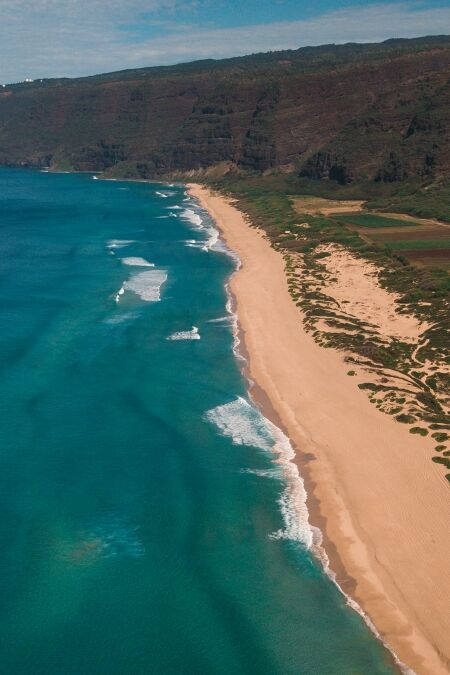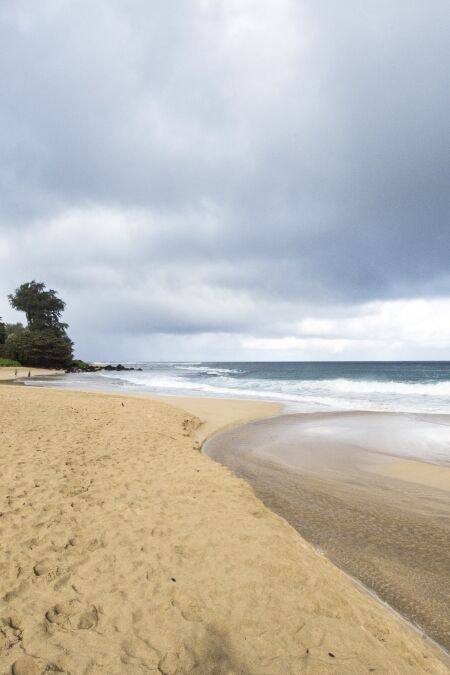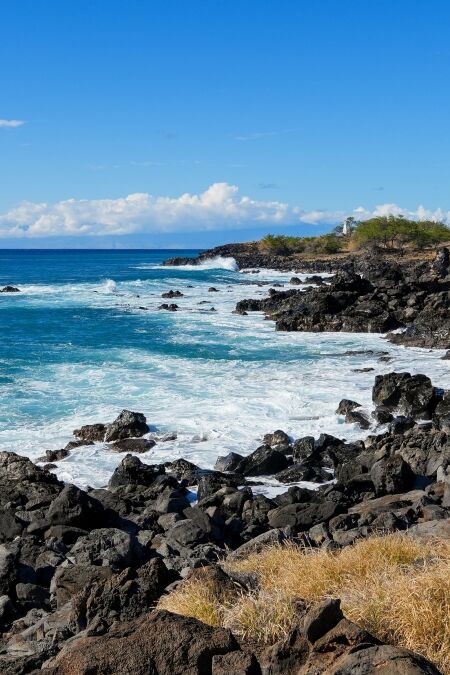In northwestern Kauai, Kōkeʻe State Park is renowned for its scenic hiking trails, nature walks, and breathtaking canyon views. With a cool climate and lush, forested landscapes, the park offers the perfect escape for outdoor enthusiasts and nature lovers. This guide will explore the best trails, attractions, and tips for visiting this captivating destination, making it easy to plan your adventure.
Highlights
- With over 45 miles of trails, hikers of all skill levels can enjoy a range of experiences, from leisurely walks through forested areas to challenging hikes that reward incredible vistas.
- Located at a higher elevation, the park provides a cooler alternative to Hawaii’s typically warm coastal areas, making it a refreshing retreat for those looking to escape the heat.
- Kōkeʻe is a haven for bird enthusiasts. You’ll have the chance to spot native Hawaiian forest birds like the ʻapapane and ʻiʻiwi, adding a unique wildlife experience to your trip.
- Learn about the park’s geology, flora, and fauna at this small but informative museum, which also provides trail maps and park information.
- Depending on when you visit, you may be treated to blooming koa trees, ʻōhiʻa lehua flowers, or the park’s famous mokihana berries, which add to the unique environment of this mountainous region.
- If you’re looking for an extended stay, the park offers camping facilities and picturesque picnic spots.
History
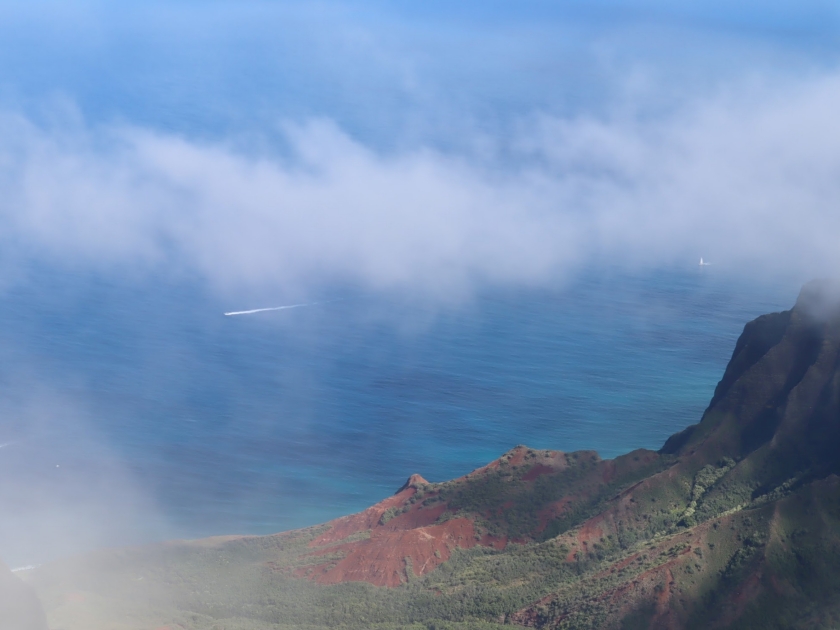
Early History of Kōkeʻe State Park
Kōkeʻe State Park, located in northwestern Kauaʻi, holds deep historical and cultural significance. Before European contact, Native Hawaiians inhabited this land for centuries, living in harmony with its diverse ecosystems. They relied on the area’s natural resources for sustenance and incorporated the region into their spiritual practices. The arrival of Captain James Cook in 1778 marked the beginning of European influence, bringing significant changes, including new diseases and cultural shifts. However, the natural beauty and cultural importance of Kōkeʻe remained intact despite these transformations.
Development of Kōkeʻe State Park
During the 19th century, the land now encompassing Kōkeʻe State Park was primarily used for ranching and agriculture, though the terrain limited extensive development. In 1909, efforts to preserve the area’s natural beauty were initiated with the establishment of Waimea Canyon State Park, which helped protect the surrounding landscapes. Kōkeʻe State Park was officially designated in 1957, preserving a significant portion of Kauaʻi’s upland forests and scenic views, ensuring future generations could enjoy the region’s unspoiled natural splendor.
Early Development and Enhancements
A pivotal moment in the park’s development came in the mid-20th century. In July 1951, Joseph M. Souza Jr., known as “Kōkeʻe Joe,” teamed up with residents Ruth Knudsen Hanner and Isabel Fayé to form the “Hui o Laka” organization. Their mission was to enhance the park’s offerings and create a natural history museum. Their efforts led to the relocation and renovation of two World War II buildings, which became the Kōkeʻe Lodge and the Kōkeʻe Natural History Museum. The museum officially opened on November 28, 1953, marking a major milestone in the park’s history and engagement with the community.
Growth of Hawaii’s Park System
Joseph M. Souza’s influence extended well beyond Kōkeʻe. In 1964, he was appointed director of Hawaii’s newly established state park system. Under his leadership, the number of parks expanded from 22 parks covering 6,400 acres to 64 parks, encompassing more than 20,000 acres by the time he retired in 1978. Souza’s efforts significantly bolstered the State Parks Division’s credibility and laid the foundation for Hawaii’s extensive park system.
Cultural Significance
Kōkeʻe State Park also holds great cultural importance. Each year, the park hosts the Emalani Festival, commemorating Queen Emma’s journey to Kōkeʻe in 1871. This celebration features hula performances and cultural displays, drawing visitors from across Hawaii and beyond, further highlighting the park’s role in preserving and showcasing Hawaiian heritage.
Natural Features and Recreation
Spanning approximately 4,345 acres, Kōkeʻe State Park is renowned for its stunning vistas of Waimea Canyon and Kalalau Valley. The park’s diverse ecosystems, shaped by its unique microclimate, support a wide array of native flora and fauna. Visitors can enjoy a variety of outdoor activities, including hiking on more than 45 miles of trails, birdwatching, and picnicking, making it a prime destination for nature enthusiasts and adventurers alike.
Modern-Day Kōkeʻe State Park
Today, Kōkeʻe State Park remains a vital recreational area with amenities such as hiking trails, camping sites, and the educational resources provided at the Kōkeʻe Natural History Museum. The park continues to honor its rich history while promoting conservation efforts and fostering community engagement, making it a must-visit location for those seeking both natural beauty and cultural depth on Kauaʻi.
Top Attractions in Kokee State Park
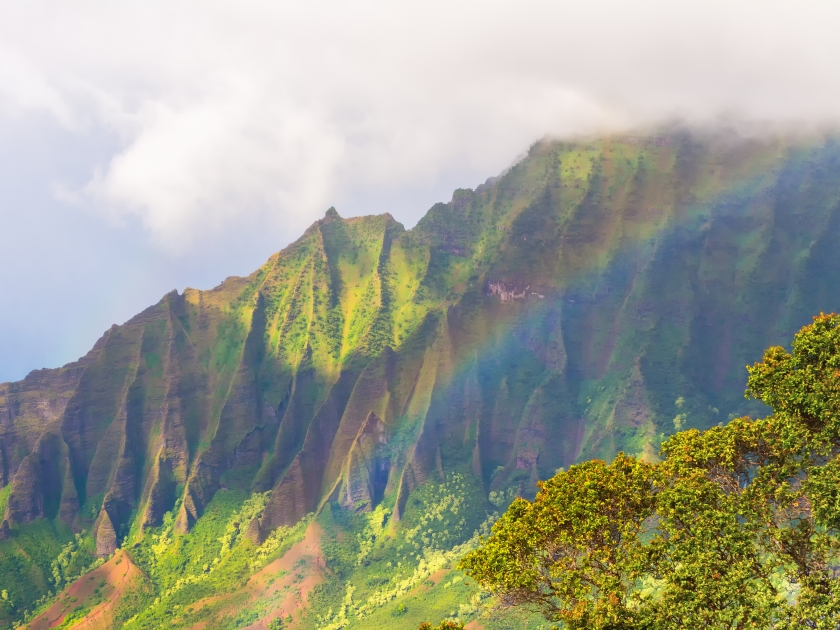
Kalalau Lookout
Kalalau Lookout offers sweeping views of the majestic Kalalau Valley and the dramatic cliffs of the Na Pali Coast. From this vantage point, visitors can marvel at one of the most iconic landscapes in Hawaii, especially on clear days when the valley’s lush green ridges and deep blue ocean meet.
Waimea Canyon Lookout
Often called the “Grand Canyon of the Pacific,” Waimea Canyon Lookout provides breathtaking panoramic views of the vast, colorful canyon. Its red rock formations and cascading waterfalls make it a must-see stop for anyone visiting Kokee State Park.
Kokee Natural History Museum
The Kokee Natural History Museum offers visitors an insightful glimpse into the region’s unique ecosystem, including its flora, fauna, and cultural heritage. It’s the perfect starting point for those looking to deepen their understanding of the park’s natural beauty.
Alakai Swamp Trail
Known as one of the best birdwatching spots in Hawaii, the Alakai Swamp Trail takes hikers through a misty, elevated rainforest. It offers a rare opportunity to spot native Hawaiian birds and experience the unique landscape of the world’s highest swamp.
Cliff and Canyon Trails
The Cliff and Canyon Trails are popular hiking routes that offer dramatic landscapes, with cliffs, vibrant red earth, and lush greenery. These trails reward hikers with stunning viewpoints of both Waimea Canyon and the surrounding forests.
Best Hiking Trails
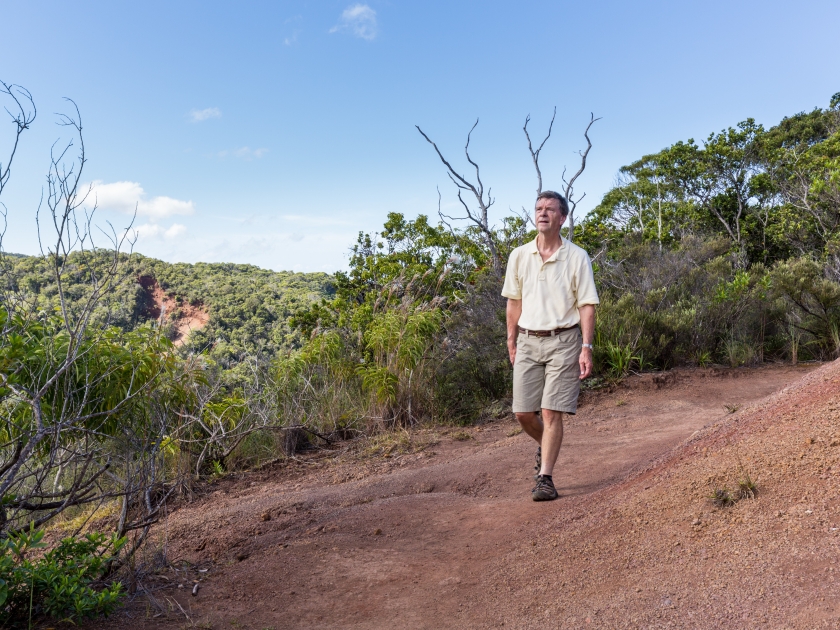
Awaawapuhi Trail
The Awaawapuhi Trail is a 6.5-mile round-trip hike that rewards adventurers with stunning views of the Na Pali Coast. The trail descends through forested landscapes, ending at a breathtaking cliffside viewpoint overlooking the dramatic ocean and valley below.
Kukui Trail
For those seeking a challenge, the Kukui Trail offers a steep, 5-mile trek into the depths of Waimea Canyon. With its rugged switchbacks and impressive canyon views, this hike is perfect for experienced hikers looking for an adventurous day out.
Pihea Trail
The Pihea Trail is an easier, more accessible hike that takes visitors along the rim of Kalalau Valley. It’s known for its scenic views and connections to other trails, making it a great option for those looking to explore more of the area without strenuous effort.
Nualolo Trail
The Nualolo Trail is a 7.6-mile hike offering some of the most rewarding views in Kokee State Park. It winds through lush forests and leads to cliffside viewpoints that overlook both Waimea Canyon and the Na Pali Coast, making it a favorite among hikers who seek breathtaking scenery.
Things to Do
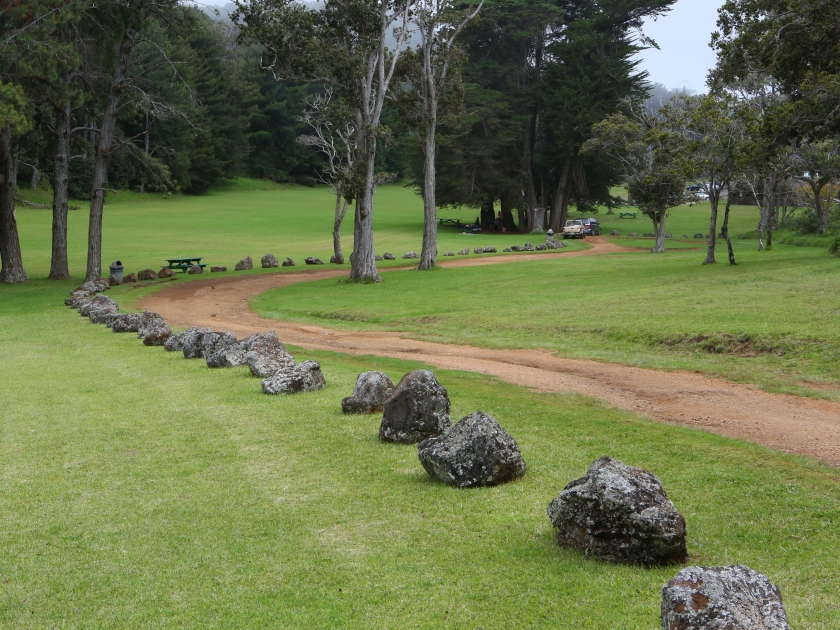
Hike Through Stunning Landscapes
Kōkeʻe State Park offers hiking trails for all skill levels, from easy walks like the Pihea Trail to challenging treks like the Awaawapuhi and Kukui Trails. Whether you’re seeking breathtaking coastal views or canyon vistas, there’s a trail for every adventurer.
Birdwatching in a Paradise of Endemic Species
For birdwatching enthusiasts, the Alakai Swamp Trail and nearby lookouts are prime spots to observe rare Hawaiian honeycreepers and other native species. Early mornings and late afternoons offer the best chances to catch a glimpse of these beautiful birds.
Enjoy a Picnic in Nature’s Serenity
Several picnic areas in Kōkeʻe State Park provide a serene setting for outdoor meals. Visitors can relax at scenic spots with tables surrounded by lush greenery and incredible canyon views, perfect for an afternoon break.
Capture Breathtaking Views and Wildlife
Photography enthusiasts will find endless opportunities in Kōkeʻe. The Kalalau Lookout, Waimea Canyon Lookout, and the various trails offer some of the best spots to capture Kauai’s landscapes, wildlife, and magical sunrises or sunsets.
Unique Experiences
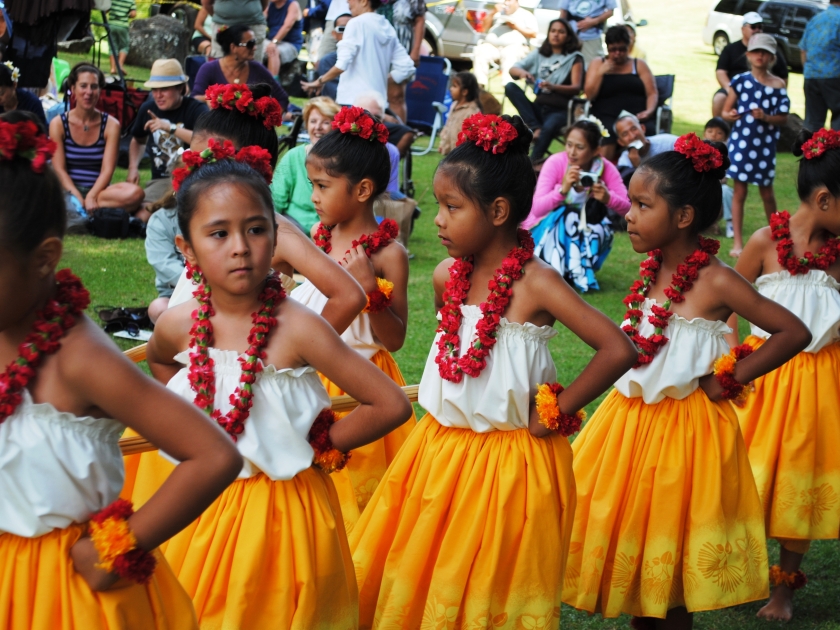
Immerse in Culture at the Emalani Festival
Each second Saturday of October, Kōkeʻe State Park hosts the Emalani Festival, a celebration honoring Queen Emma’s historic journey to the region. The event features captivating hula performances, live music, and local crafts, offering visitors a deep connection to Hawaiian culture.
Create with Nature at Wreath-Making Workshops
At the Kōkeʻe Natural History Museum, you can participate in wreath-making workshops using native plants. These hands-on experiences let you craft a unique keepsake while learning about the island’s rich plant life.
Spot Unique Wildlife While Birdwatching
Kōkeʻe is a birdwatcher’s paradise, home to several endemic species like the Hawaiian honeycreepers. Bring binoculars to observe these rare birds in their natural habitat, especially along the Alakai Swamp Trail, and at lookout points.
Practical Information
Kōkeʻe State Park offers essential facilities, including restrooms, a visitor center, and picnic areas for a comfortable experience. Be sure to pack rain gear and layers, as the park’s cool climate can change quickly. The park is open daily, but always check trail conditions and follow safety guidelines, including carrying emergency contact information and staying on marked paths to ensure a safe and enjoyable visit.
Camping at Kokee State Park
Kōkeʻe State Park offers both camping and cabin rental options for those looking to extend their stay. The park’s campgrounds require permits, which can be obtained in advance, while cabins provide a more comfortable option for overnight visitors. Be sure to pack warm clothing, rain gear, and sturdy equipment, as temperatures can drop at night and the weather can shift quickly in this cool, elevated environment.
Tips for Visiting
- Arrive early to enjoy popular trails and lookouts before crowds arrive.
- Bring layers and rain gear for changing weather conditions.
- Pack plenty of water and snacks, especially for long hikes.
- Wear sturdy shoes suitable for uneven terrain and muddy trails.
- Stop by the Kōkeʻe Natural History Museum for trail maps and local insights.
- Check trail conditions and weather forecasts before heading out.
- Secure camping or cabin permits in advance if planning to stay overnight.
- Don’t forget binoculars for birdwatching and a camera for capturing scenic views.
- Follow safety guidelines by staying on marked trails and avoiding cliff edges.
Best Times to Visit
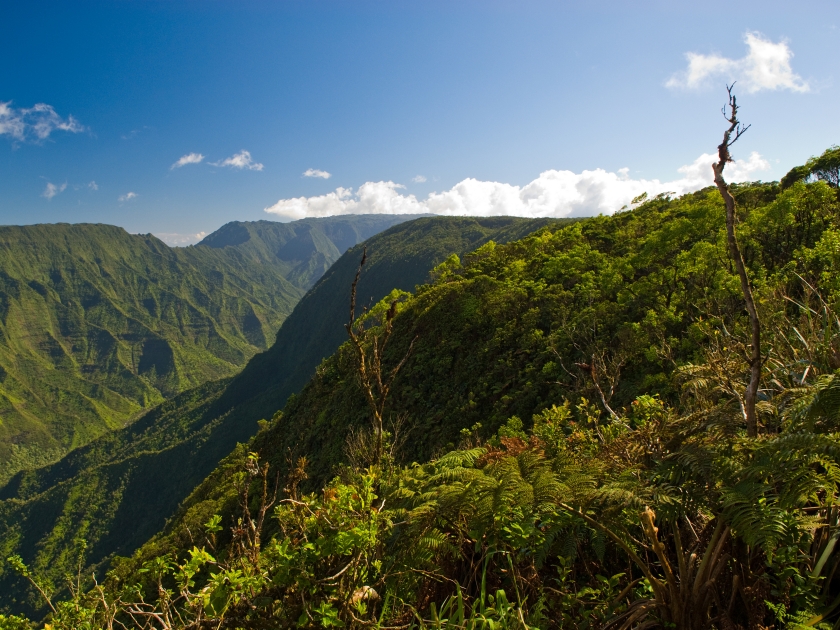
The best times to visit Kōkeʻe State Park are during the fall and spring when the weather is mild and perfect for hiking and outdoor activities. These seasons also offer ideal conditions for birdwatching, with many species active in the cooler temperatures. Winter can bring more rain, so be prepared for muddy trails, while summer provides clearer skies and vibrant landscapes, making it a great time to take in the park’s stunning views.
Frequently Asked Questions (FAQs)
Kokee State Park is renowned for its scenic hiking trails, lush forests, and stunning views of the Waimea Canyon and Kalalau Valley.
Yes, Kokee State Park offers both tent camping and cabin rentals for visitors, providing a great base for exploring the park’s trails.
Popular trails in Kokee State Park include the Awa’awapuhi Trail, Kalalau Lookout Trail, and Pihea Trail, offering spectacular canyon and valley views.
Kokee State Park is home to various native Hawaiian birds, such as the ‘apapane and ‘i‘iwi, as well as other wildlife like wild boar.
There is an entrance fee of $5 per person for out-of-state visitors, while Hawaii residents with a valid driver’s license or state ID are exempt from this fee. There is also a parking fee of $10 per vehicle for non-residents.
The Kalalau Lookout and Puu O Kila Lookout are must-see viewpoints in Kokee State Park, offering breathtaking views of the Kalalau Valley and Na Pali Coast.
Yes, Kokee State Park has designated picnic areas where visitors can enjoy a meal while surrounded by the park’s natural beauty.
How to Get There
By Car
Driving to Kōkeʻe State Park is a straightforward and scenic journey for those on Kauaʻi. Begin by heading west on Kaumualiʻi Highway (HI-50) from Līhuʻe, taking in the stunning coastline along the way. Continue toward Waimea, where you’ll turn onto Waimea Canyon Drive (HI-550). This route will lead you through the breathtaking Waimea Canyon, often referred to as the “Grand Canyon of the Pacific.” The drive is approximately 45 minutes to an hour, depending on traffic, and offers numerous pullouts to stop and enjoy the views. Once you reach Kōkeʻe State Park, ample parking is available for visitors.
By Bus
Reaching Kōkeʻe State Park by bus is a bit more challenging, as the public transportation options are limited. Kauaʻi’s bus system can take you as far as Waimea, but from there, another mode of transportation is required to navigate the ascent to the park. Consider hiring a taxi or shuttle service in Waimea to take you the rest of the way. Check the bus schedules in advance to plan your trip, as the service may have limited times, especially on weekends or holidays. This journey allows travelers to appreciate the island’s lush landscapes without the worry of navigating the roadways themselves.
Get Lost in Nature’s Playground
Kōkeʻe State Park is where nature paints with bold strokes, from the dramatic cliffs of the Na Pali Coast to the vibrant colors of Waimea Canyon. Its hiking trails, birdwatching spots, and cultural experiences offer something for every adventurer. Whether you’re seeking a challenging trek or a peaceful picnic with breathtaking views, Kōkeʻe’s landscapes and rich history make it a destination worth exploring time and time again.


